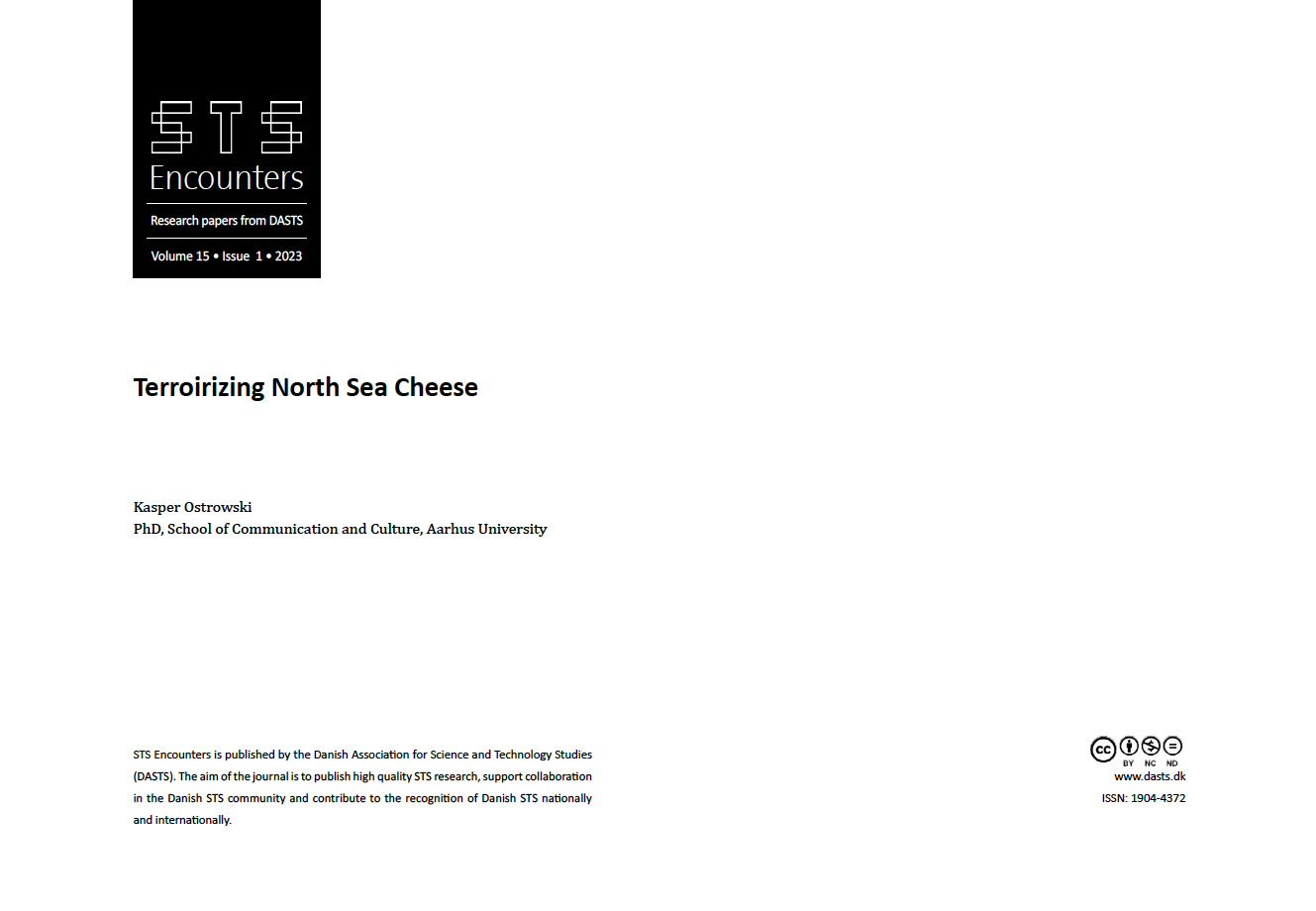Terroirizing North Sea Cheese
DOI:
https://doi.org/10.7146/stse.v15i1.136818Keywords:
STS, ANT, food studies, terroir, cheeseAbstract
This paper investigates the construction of the geographical claim that “the cheese has terroir”. Drawing on food-centered science and technology studies and on actor-network theory, I first propose terroirizing – a verbal noun for enacting terroir – as an analytic device in the exploration of how the origins and history of food are made tangible and how place and imaginaries are invoked to bind and fasten products and produce within specific geographical and sociocultural settings. Terroirizing, I argue, is a valuable analytic device for investigating enactments of place and the practice of terroir in regard to food and foodstuffs. The paper goes on to investigate the geographical claims promoted by a Danish dairy in order to terroirize a cheese and thus to advance a particular coastal place-specificity in a Danish foodscape with few strong affiliations with geographical claims. The terroirizing of Thise Dairy’s North Sea Cheese reveals that terroir and place are heterogenous constructs which are dependent not just on microclimate or measurable ecosystems, but also on the construction and circulation of specific imagery and materials. I demonstrate how cheese wrappings, advertisements, the North Sea itself, a ventilation technology, aerosols (sea-spray particles), and salt crystals are all brought together to form an assemblage – a cheese with a Nordic coastal terroir.

Downloads
Published
How to Cite
Issue
Section
License

This work is licensed under a Creative Commons Attribution-NonCommercial-ShareAlike 4.0 International License.
Starting with volume 15, articles published in STS Encounters are licensed under Attribution-NonCommercial-ShareAlike 4.0 International (CC BY-NC-SA 4.0). The editorial board may accept other Creative Commons licenses for individual articles, if required by funding bodies e.g. the European Research Council. Previous articles are not licensed under Creative Commons. In these volumes, all rights are reserved to the authors of the articles respectively.




